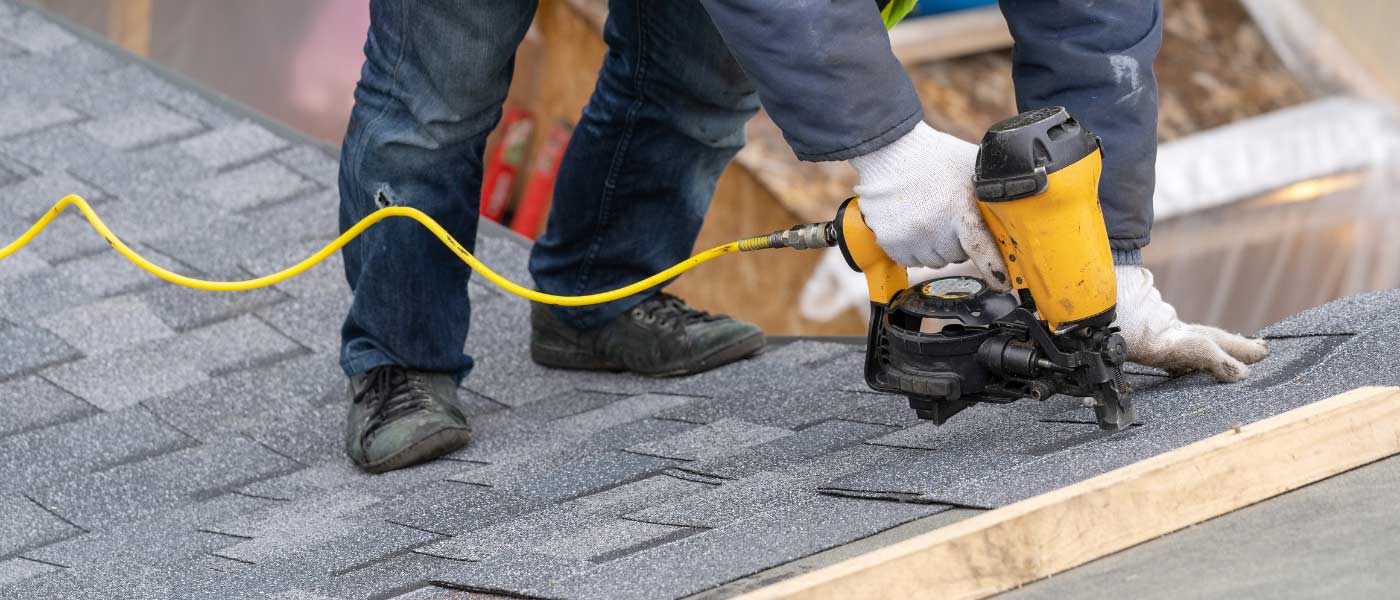Shingles are falling off
- If you’ve got shingles falling off your roof, it’s time to repair it. Damage is a problem for roofs beyond the fact that it can be unsightly. There are a number of hazards associated with having shingles missing from your roof, including higher heating and cooling bills, increased danger of fire damage, and potential increased risk of structural damage from water leaks.
- For any homeowner who values their home and wants to make sure it stays in good condition, having the roof repaired should be at the top of the list. It will ensure their home remains safe for them and their family for years to come.
If you need some help determining if you’re ready for a roof replacement or just need repairs on a section of your roof, then get in contact with us! We can provide you with an inspection and our expert advice on what course of action will best protect your house.
Your shingles are curling and buckling
Curling and curling of shingles is a tell-tale sign that you need repair. If the shingles on your roof are curled up, it means the granules are gone. A loss of granules exposes the fiberglass mat and lowers your roof’s ability to deflect heat. That leads to cracking, which lets in water, which leads to more damage.
Buckling is another indication of water damage. If shingles are buckled up or bent over they’re likely warped by moisture. This may be caused by inadequate attic ventilation or improper installation of roof deck underlayment (black paper).
The first step in finding the source of your problem is identifying where it’s not coming from. Let your neighbors know you’re replacing a roof and ask them if they notice any moisture problems in their own homes after you have yours replaced. If not, then you can eliminate leaky plumbing as a cause for your problem.
Your roof is at least 20 years old
If your roof is at least 20 years old, it may be time to consider a replacement. The typical lifespan of an asphalt shingle roof is 20-25 years. Older roofs are more likely to leak and require more frequent repairs than newer ones, so it’s generally best to replace them proactively rather than waiting until a leak occurs.
The older your roof gets, the higher the risk that leaks will cause costly damage that might not be covered by your insurance policy. If you’re not sure when your roof was last replaced, check with your insurance company or look at records of previous homeowners’ policies that you might have received when you purchased the home. Most insurance companies will replace a damaged roof only up to twice in any 30-year period, so if you’ve already had one replacement in the past few years and need another one now, it’s especially important to contact your insurer before proceeding with repairs.
You see daylight through the roof boards in your attic.
If you see daylight streaming through your roof boards, this is sign of a serious problem. The most likely cause is that the roof has a leak. This can lead to many issues with your roof and home in general, including major water damage that can cause mold growth and even the collapse of your roof.
It’s essential that you have an expert inspect it as soon as possible if you suspect a leak in your roof. If it’s not immediately fixed, water will continue to seep into your home and cause damage to the structure of the roof itself, as well as its insulation and drywall below. Further, excess moisture caused by water infiltration can also lead to mold growth which poses health risks for anyone living or working in the building. While it may seem like a minor issue at first glance, catching leaks early on prevents irreversible damage from occurring later down the road—and will save you money in costly repairs or replacements!
Get a new roof when it’s obvious that you need one.
When you notice a problem with your roof, it is time to contact a licensed roofing contractor. Allowing any type of damage to your roof to continue without repair will make the issue much worse and more costly to fix later. Once you have determined that a repair or replacement is necessary, take some time to research which contractor is best for your project. Don’t be afraid to get multiple quotes on larger projects, as each company has their own pricing structure and policies. Additionally, don’t be afraid to ask for references from past customers. If possible, see if any clients are willing to give you an in-person demonstration of the work they had completed on their own property. Even if you don’t know much about roofs yourself, having someone who understands the different types of materials used and what will be best for your home can help guide your decision-making process so that you make the right choice for your needs and budget.
